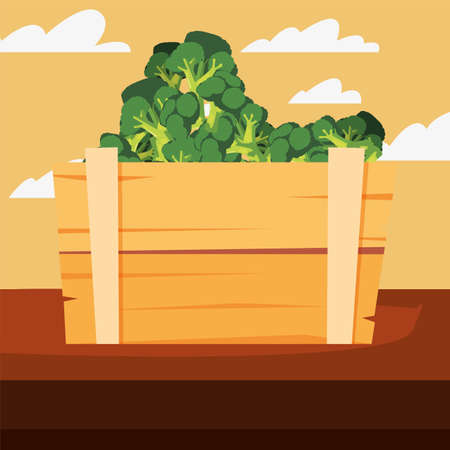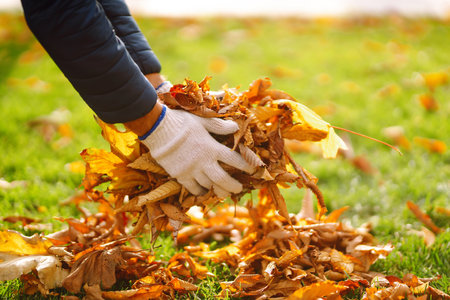1. Understanding the Basics of Composting
Composting is a natural process that turns organic materials—like food scraps and yard waste—into nutrient-rich soil known as compost. This process not only helps reduce household waste but also supports sustainable gardening practices all year round, no matter the season.
What to Include in Your Compost Pile
Successful composting starts with knowing what to add and what to avoid. A healthy compost pile needs a good balance of “greens” (nitrogen-rich materials) and “browns” (carbon-rich materials). Here’s a simple breakdown:
| Greens (Nitrogen) | Browns (Carbon) |
|---|---|
| Fruit and vegetable scraps | Dried leaves |
| Coffee grounds and filters | Shredded newspaper |
| Grass clippings | Cardboard (non-coated) |
| Tea bags (non-plastic) | Sawdust (from untreated wood) |
What to Avoid Putting in Your Compost
Some items can attract pests, cause odors, or introduce harmful substances into your compost. Avoid adding the following:
- Meat, dairy, or oily foods
- Pet waste (especially from cats and dogs)
- Treated wood or sawdust from treated wood
- Synthetic materials like plastic or rubber
- Diseased plants or invasive weeds
How Decomposition Works
The decomposition process relies on microorganisms—like bacteria and fungi—to break down organic matter. These tiny helpers need the right mix of air, moisture, and temperature to thrive. Turning your compost regularly helps provide oxygen, while maintaining moisture similar to a wrung-out sponge ensures microbes stay active.
The Four Key Ingredients for Successful Composting:
- Air: Oxygen is essential for aerobic decomposition.
- Water: Keep it damp but not soaked.
- Browns: Provide carbon for energy.
- Greens: Provide nitrogen for growth.
Environmental Benefits in the U.S. Context
In the United States, food waste makes up nearly 30% of what we throw away. By composting at home, you reduce landfill waste and lower greenhouse gas emissions like methane. Plus, using homemade compost improves soil health, conserves water, and reduces the need for chemical fertilizers—making your garden more eco-friendly and resilient through every season.
Fun Fact:
The U.S. Environmental Protection Agency (EPA) encourages backyard composting as one of the easiest ways individuals can fight climate change at home.
Whether youre dealing with summer heat or winter frost, understanding these basic principles sets you up for composting success all year long.
Spring: Kickstarting Your Pile After Winter
As the snow melts and the ground begins to thaw, spring is the perfect time to revive your compost pile after a long, cold winter. During the colder months, decomposition slows down significantly, but with a few simple steps, you can breathe new life into your compost and get it working efficiently again.
Manage Moisture from Snowmelt
One of the first things to check in early spring is the moisture level in your compost pile. Melting snow and spring rains can leave your pile soggy, which limits airflow and slows decomposition. To test for excess moisture, grab a handful of compost and squeeze it—if water drips out, its too wet.
Tips to Fix Excess Moisture:
- Add dry brown materials like shredded newspaper, cardboard, or dried leaves.
- Avoid adding wet kitchen scraps until the pile balances out.
- Turn the pile more frequently to improve aeration and evaporation.
Add Fresh Green Materials
After winter, your compost pile will benefit from an infusion of nitrogen-rich green materials. These help re-energize microbial activity and speed up decomposition.
| Green Material | Why Its Good |
|---|---|
| Grass Clippings | High in nitrogen; heats up the pile quickly |
| Coffee Grounds | Rich in nitrogen and easy to mix in |
| Vegetable Scraps | Adds moisture and nutrients |
Turn Your Pile for Optimal Airflow
A good turning routine is key to waking up your compost after winter. Turning the pile introduces oxygen, which helps bacteria become active again. Use a pitchfork or compost aerator to mix the materials thoroughly. Try to turn your pile every 1–2 weeks during early spring for best results.
Pro Tip:
If you notice any matted layers of leaves or clumps of food waste, break them up while turning to ensure even decomposition.
With these springtime practices—managing moisture, adding fresh greens, and improving airflow—you’ll set your compost pile on the right path for a productive year ahead.

3. Summer: Maintaining Heat and Managing Pests
Summer is the season when compost piles can really thrive—if managed correctly. With higher temperatures and more yard waste available, its the perfect time to keep your compost pile hot and productive. However, summer also brings some unwanted guests like fruit flies, raccoons, and rodents. Heres how to make the most of summer composting while keeping pests at bay.
Keep Your Pile Hot and Active
The warm weather naturally helps your compost heat up, which speeds up decomposition. To maintain an active pile:
- Turn frequently: Aerate your pile every week to keep oxygen flowing and microbes happy.
- Balance greens and browns: Add kitchen scraps (greens) and dry leaves or shredded paper (browns) in roughly equal parts.
- Monitor moisture: The pile should feel like a wrung-out sponge—damp but not soggy. Add water if it’s too dry or more browns if it’s too wet.
Pest Management Tips
Warm temperatures can attract pests looking for food or shelter. Here’s how to protect your compost from common backyard intruders:
Common Summer Compost Pests
| Pest | Signs | Prevention Tips |
|---|---|---|
| Fruit Flies | Tiny flying insects around the bin | Bury food scraps under browns; avoid adding sugary fruits on top |
| Raccoons | Tipped-over bins or scattered compost | Use a secure, animal-proof bin with a tight-fitting lid; avoid meat and dairy scraps |
| Rodents (e.g., mice, rats) | Tunnels or droppings near the pile | Avoid fatty foods; line bottom of bin with wire mesh; turn pile often |
Pro Tip: Use a Compost Thermometer
If you’re serious about your summer composting game, invest in a compost thermometer. Keeping the center of your pile between 130°F–160°F ensures rapid breakdown of materials and helps kill off weed seeds and pathogens.
What to Compost More of in Summer
This season offers plenty of fresh green materials. Great additions include:
- Lawn clippings (in thin layers to prevent matting)
- Garden trimmings
- Fruit and vegetable peels from BBQs and picnics
Avoid These Summer Compost Mistakes:
- Adding large amounts of cooked food or meat—these attract pests fast!
- Letting your pile dry out in the sun—keep it covered or shaded if needed.
- Ignoring bad smells—they’re a sign something’s off. Turn the pile and rebalance greens/browns.
With just a little attention, your summer compost can become a powerhouse of nutrient-rich material for your garden—all while staying pest-free!
4. Fall: Taking Advantage of Seasonal Abundance
Fall is a fantastic time to supercharge your compost pile. With leaves falling, gardens winding down, and harvests wrapping up, there’s a natural abundance of organic materials perfect for composting. By using what the season offers, you can build a nutrient-rich pile and prepare it for the colder months ahead.
Make Use of Autumn Leaves
Fallen leaves are one of the best carbon-rich (or “brown”) materials for your compost pile. They help balance out the nitrogen-rich (“green”) materials like kitchen scraps and garden trimmings. Shredding leaves before adding them to your compost helps them break down faster and prevents matting, which can slow decomposition.
Tip:
Create a leaf pile or store shredded leaves in bags to use throughout winter when brown materials are harder to come by.
Garden Clean-Up Gold
As you clean up your garden beds, don’t toss all the plant material in the trash—most of it belongs in your compost bin! Spent annuals, trimmed perennials, and non-diseased plant debris are excellent additions. Avoid adding any plants that show signs of disease or pest infestation.
Compost-Worthy Garden Debris
| Yes – Add These | No – Avoid These |
|---|---|
| Dead annual flowers | Diseased plants |
| Vegetable plant remains (e.g., tomato vines) | Weeds with mature seeds |
| Pruned branches (chopped small) | Treated wood or chemically sprayed plants |
Harvest Leftovers = Compost Treasures
After harvesting fruits and vegetables, you’ll likely have leftover stems, peels, husks, and other scraps. These make great green materials for your compost pile. Corn stalks, carrot tops, pumpkin guts, and apple cores are all welcome additions—just chop them into smaller pieces to speed up decomposition.
Balance Your Pile for Winter Success
The key to good composting is maintaining a proper balance between greens and browns. In fall, you’re likely to have more browns than greens, so be mindful of adding enough food scraps or fresh grass clippings to keep things active. A well-balanced pile will continue breaking down even as temperatures drop.
Green vs. Brown Material Cheat Sheet
| Green Materials (Nitrogen) | Brown Materials (Carbon) |
|---|---|
| Vegetable scraps | Dried leaves |
| Coffee grounds | Sawdust (untreated) |
| Fresh grass clippings | Shredded newspaper |
Aim for Insulation Before the Freeze
If you live in an area with cold winters, take advantage of fall to build up your pile. A larger compost heap insulates itself better against freezing temperatures. Layer green and brown materials generously and turn the pile regularly before it gets too cold.
Helpful Hint:
You can cover your pile with a tarp or straw to help retain heat and moisture during winter.
By making the most of what fall naturally provides—leaves, garden debris, and harvest leftovers—you’ll not only reduce waste but also create a thriving compost system ready to power through winter.
5. Winter: Cold Weather Strategies for Continued Decomposition
Composting in winter may seem like a challenge, especially in colder U.S. regions where temperatures often drop below freezing. But with the right strategies, you can keep your compost pile active all year long. Here’s how to make winter composting work for you.
Insulate Your Compost Pile
One of the biggest challenges in winter is keeping your compost pile warm enough for microbes to stay active. Insulation is key. You can use natural materials or store-bought solutions to trap heat inside your pile.
Simple Insulation Options:
| Material | How to Use |
|---|---|
| Straw or Hay Bales | Stack around the bin or heap to form an insulating wall. |
| Leaves | Pile dry leaves around and on top of the compost for added warmth. |
| Tarp or Old Carpet | Cover the pile to protect it from snow and retain heat. |
| Snow Itself | A layer of snow can actually insulate by preventing colder air from reaching the pile. |
Choose the Right Bin for Cold Weather
The type of compost bin you use can make a big difference when temperatures drop. Enclosed bins help retain heat better than open piles, making them ideal for winter months.
Top Winter Bin Choices:
- Insulated Tumblers: Easy to turn and retain heat well due to their enclosed design.
- Wooden Bins with Lids: Wooden sides offer some insulation; adding a lid helps keep out snow and rain.
- Plastic Storage Bins: Drill holes for aeration and keep them in a sheltered area like a garage or shed.
Add the Right Ingredients
Your compost pile still needs a good mix of greens (nitrogen-rich) and browns (carbon-rich) even in winter. Since decomposition slows down, chopping materials into smaller pieces will help speed up the process.
Winter-Friendly Compost Additions:
- Kitchen Scraps: Vegetable peels, coffee grounds, tea bags (remove staples).
- Browns: Shredded newspaper, cardboard, dried leaves.
- Avoid Excess Water: Frozen scraps can add too much moisture; balance with dry browns.
Troubleshooting Tips for Winter Composting
If your pile seems dormant during extreme cold snaps, don’t worry—activity will resume as temperatures rise. In the meantime, continue adding materials and turning when possible to maintain airflow.
Quick Winter Composting Tips:
- Add hot water bottles (sealed) temporarily to boost internal temperature.
- Create a small “active core” by placing fresh material in the center of the pile.
- If outdoor composting isn’t feasible, consider vermicomposting indoors using red wiggler worms.
With these winter strategies, your composting journey doesnt need to pause just because it’s cold outside. Keep feeding your pile and preparing nutrient-rich soil for spring planting!
6. Troubleshooting and Tips for Year-Round Success
Even the best compost piles can hit a few bumps in the road. Whether youre dealing with funky smells, slow decomposition, or curious critters, understanding common composting issues and how to fix them is key to keeping your pile healthy all year long.
Common Composting Problems and Solutions
| Problem | Possible Cause | Solution |
|---|---|---|
| Bad odor (like rotten eggs) | Too much green material or not enough air | Add dry browns like leaves or shredded paper, and turn the pile to aerate |
| Pile is too dry | Lack of moisture, especially in summer | Sprinkle water while turning until it feels like a wrung-out sponge |
| Pile isn’t breaking down | Imbalance of greens and browns, or cold temperatures | Add more nitrogen-rich greens or insulate the pile in colder months |
| Pests or rodents | Food scraps not buried or meat/dairy added | Avoid meat/dairy, bury food scraps deep inside the pile, use a secure bin if needed |
Seasonal Maintenance Strategies
Spring
This is a great time to restart or refresh your compost pile. As temps rise, microbial activity picks up. Turn your pile more frequently and add fresh greens from garden cleanups.
Summer
Compost heats up quickly in warm weather, which speeds up decomposition. Keep an eye on moisture levels; water may evaporate faster, so you might need to add water more often.
Fall
This season offers an abundance of browns like dried leaves. Shred them before adding to help break down faster. Balance these with kitchen scraps to maintain a good green-to-brown ratio.
Winter
Decomposition slows down but doesnt stop completely. Insulate your bin with straw bales or old blankets if youre in a colder zone. Keep adding materials, even if they take longer to break down—come spring, your pile will bounce back quickly.
Quick Tips for Compost Success All Year Long
- Chop materials: Smaller pieces decompose faster.
- Aerate regularly: Turn your pile every 1–2 weeks for oxygen flow.
- Watch the balance: Aim for about 2–3 parts browns to 1 part greens.
- Location matters: Place your bin in partial shade for summer and sun exposure in winter if possible.
- Cover it up: Use a tarp or lid during heavy rain or snow to prevent soggy piles.
With a little attention each season, your compost can stay active and productive no matter what the weather brings!


